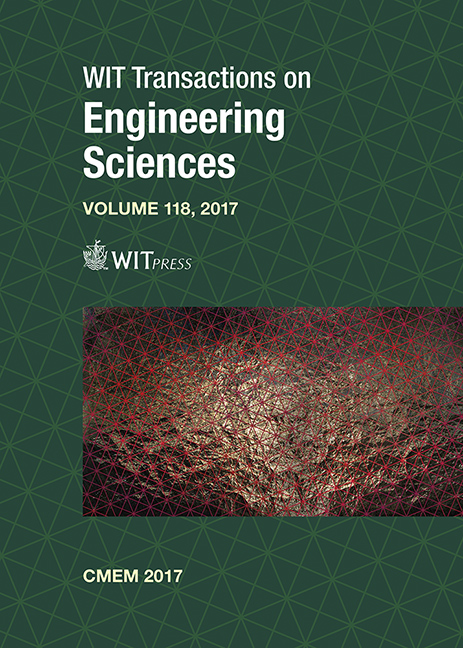PERFORMANCE EVALUATION OF A TRADITIONAL WOODEN SHIP BY PRESERVED SKILL TECHNIQUES
Price
Free (open access)
Transaction
Volume
118
Pages
12
Page Range
83 - 94
Published
2017
Size
821 kb
Paper DOI
10.2495/CMEM170091
Copyright
WIT Press
Author(s)
YOSHIFUMI OHBUCHI, HIDETOSHI SAKAMOTO, MANABU SHIMIZU
Abstract
Skills and techniques have been passed on for many years through the imitation of expert’s skills by successors. Recently, the aging of experts and lack of successors has caused serious problems in changing social environments. It is worrying that superior traditional techniques and skills will disappear without succession in various fields. Therefore, it is required that those traditional techniques and skills specialized for everyone will be preserved and succeeded by changing into datum with objectivity and reproducibility. In this study, a handmade wooden ship constructed by a technician with a traditional skill is the research object, and a new preservation method using multimedia has been introduced. Multimedia used here consists of movies, pictures, sounds, documents and 3D-CAD datum. 3D-CAD is introduced as a media, and is applied to preserve and succeed the traditional skill. In the modelling of solid 3D-CAD, each part of the ship is made and assembled in same way with actual processes and dimensions, which is evaluated using modern analysis technology. On the other hand, one of the purposes of this study is quantitative evaluation of the ship constructed by traditional technician. FRP (Fiber Reinforced Plastics) ships mainly used today are designed based on the shapes of traditional wooden ships. Therefore, a new application of evaluated results of the ship will be realized in producing new ship shapes for tailored design. For these purposes, fluid-structure coupled CAE analysis is applied to the 3D wooden ship model. By means of fluid analysis, streamline of flowing around the ship body is evaluated. In addition, the pressure distribution caused by flow is obtained. Then, under the condition that the ship is floating on the sea, structural analyses can be performed by applying resultant pressure distribution. A smooth stress distribution was observed as a result, and a quantitative evaluation of handmade wooden ships by traditional technician succeeded. Also, the restoring force and stability of the ship can be calculated using the buoyancy and gravity. The new approach proposed here can be applied to tailored design of different shaped new ships.
Keywords
traditional skill, wooden ship, succession, preservation, performance evaluation, fluid-structure coupled analysis





